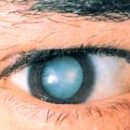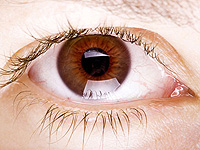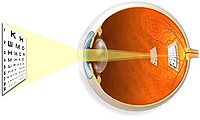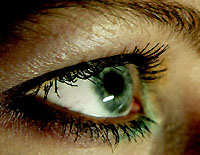What are the reasons for the formation of Belm? How is this ailment? You will receive answers to these questions by reading this article.
Content
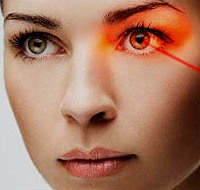 Belmo - clouding of the cornea caused by its scarsing changes.
Belmo - clouding of the cornea caused by its scarsing changes.The most frequent causes of the formation of Luma are:
- trachoma,
- Keratitis of various etiology (viral, tuberculosis, etc.),
- Injuries (injuries, chemical and thermal burns),
- Operational interventions.
The effect of luminous luminousness depends mainly on its location, values and intensity. So, when forming a cloud as a result of the wrong refraction of light rays, a distorted or fuzzy image of objects occurs. The stain of the cornea under its central location leads to a significant reduction in visual acuity. Actually Belmo, especially the alkali resulting as a result of a burn, can be accompanied by a sharp decrease in visual acuity, up to conservation only light. At the location of Luma on the periphery, it affects the visual sharpness than when localized in the center of the cornea against pupil.
The surface of the belma formed after the ulcerative processes of cornea or mechanical damage, uneven, cornea in the Belm region is often thinned. The thinned tissue of the cornea often under the action of intraocular pressure sputs, forming the so-called Etcazed Belmo. When the cornea penetrating the cornea penetrating injuries, as a result of the subsequent border, the cornea turns out to be soldered with the iris, which leads to the deformation of the pupil, the development of secondary glaucoma. Sometimes (for example, in the presence of fistula in the cornea, the enhanced development of the connective tissue) there is a compaction of the thinned cornea; Its fabric in the region of Belmo can be subjected to secondary (hyaline or fat) reincarnation. In severe cases, the process sometimes ends atrophy of the eyeball.
Treatment of Belma
Minor clouds of the cornea (cloud) do not require treatment. Treatment of the stains of the cornea and the actual Belma - only operational.
Apply keratoplasty, which allows in a significant number of cases to achieve the restoration of vision, even with dense extensive clouds. With a lone, which occurred against the background of a heavy burn, as well as after a repeated, no effect of keratoplasty resort to keratoprotezing.
Medical treatment is carried out only with residual inflammatory processes in the cornea. The choice of medication depends on the cause of the disease; prescribe, for example, anti-tuberculosis, antiviral drugs, which in some cases leads to some brilliance.
The forecast for operational treatment is favorable: when driving, which occurred after severe chemical and thermal burns, due to the development of possible complications - doubtful.
Prevention is aimed at preventing eye injuries in production and in everyday life, as well as on timely treatment of diseases leading to the formation of Luma.

